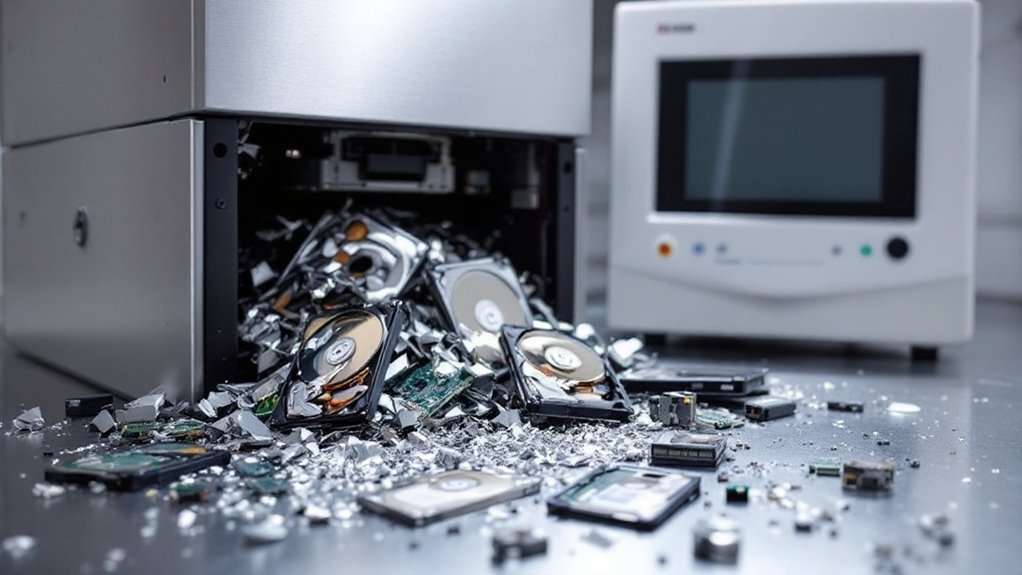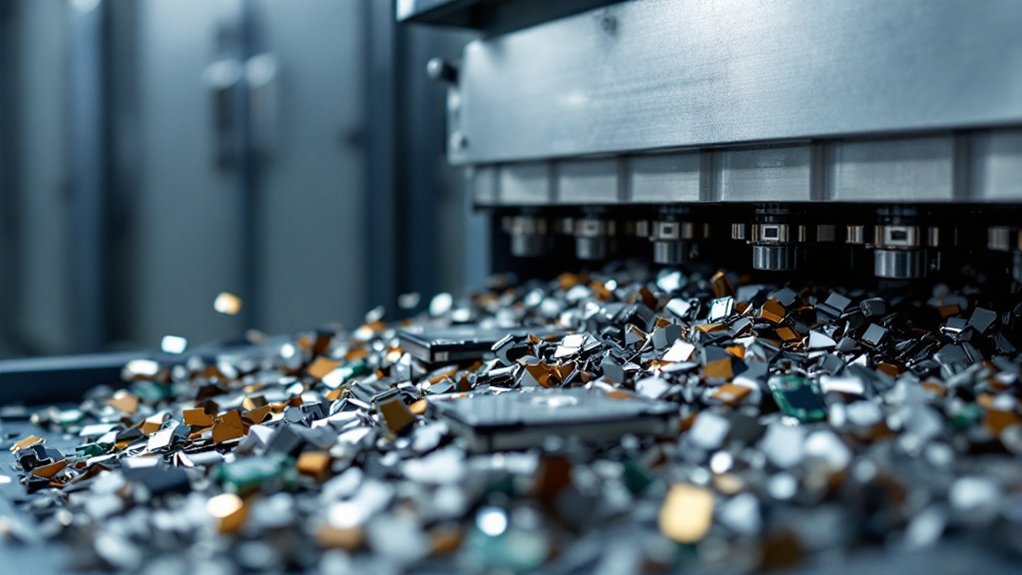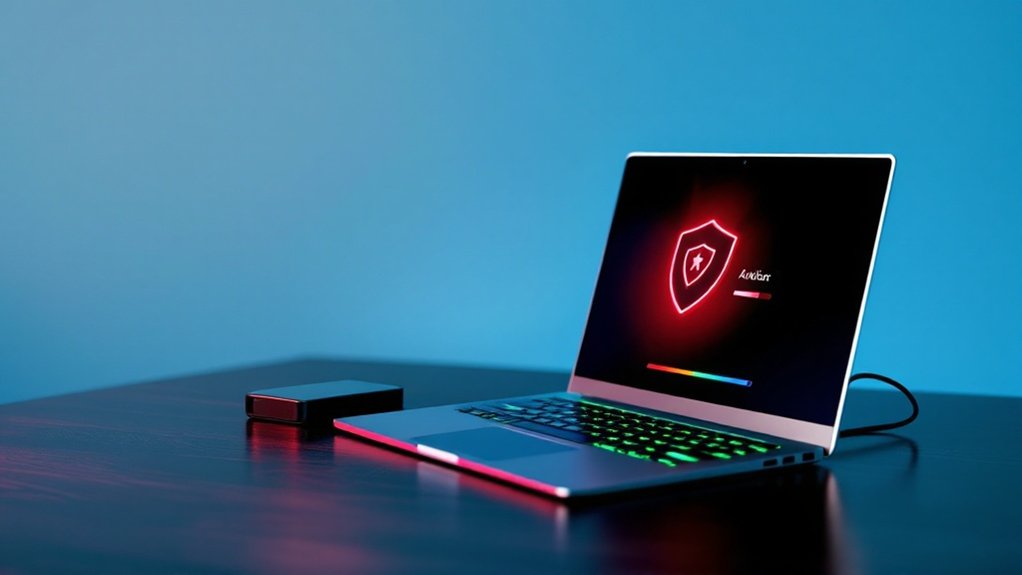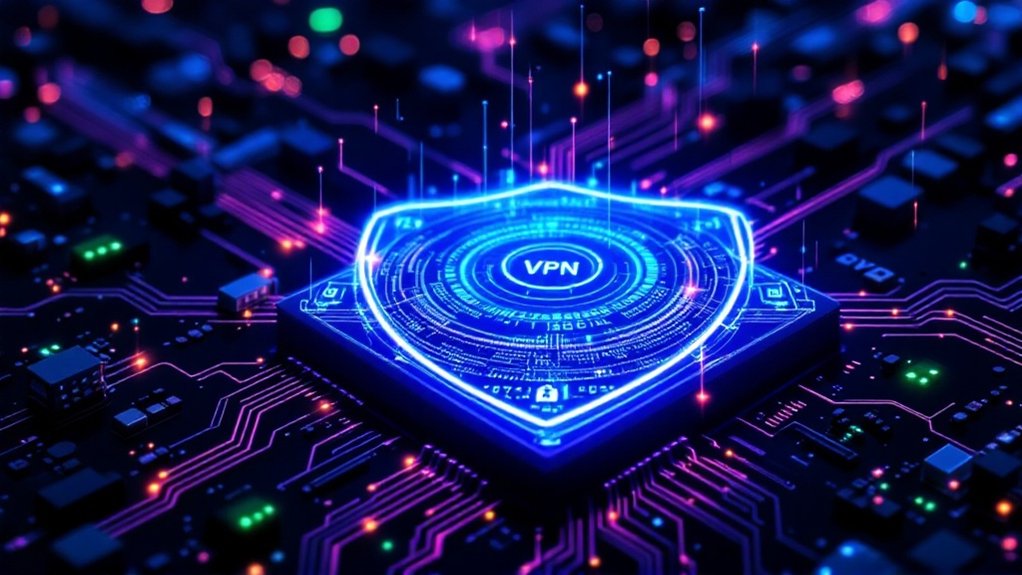Secure computer disk disposal requires proven methods to prevent data breaches and unauthorized access. Industry standards recommend physically shredding disks into particles no larger than 1/125 inches, whereas professional data overwriting software following DoD 5220.22-M standards offers an alternative approach. Organizations often employ certified disposal services that provide documented chain of custody and destruction verification. For sensitive data protection, proper disposal may include degaussing magnetic drives or specialized techniques for solid-state drives. These methods represent the foundation of thorough data security practices.

As organizations and individuals increasingly prioritize data security, the proper disposal of computer disks has become critical for protecting sensitive information from unauthorized access. Multiple proven methods exist for guaranteeing data cannot be recovered from discarded storage devices, with physical destruction and data overwriting being among the most effective approaches. Offsite decommissioning can expose sensitive data to unauthorized access and lead to security breaches.
Physical destruction methods provide the highest level of security when disposing of computer disks. Industry standards recommend shredding disks into particles no larger than 1/125 inches, whereas specialized services offer options such as disintegration, melting, or pulverization. For organizations without access to industrial equipment, driving nails through the disk or using a drill to create multiple holes can render the media unusable, though these methods may not meet formal compliance requirements. Creating regular data backups is essential before proceeding with any destruction method to prevent loss of important files.
Physical destruction through industrial shredding remains the gold standard for secure disk disposal, ensuring data can never be recovered.
Data overwriting presents a software-based alternative that can be particularly useful when devices may be repurposed. Professional-grade disk cleaning software, implementing the DoD 5220.22-M standard, performs multiple overwrites with random data patterns to guarantee thorough data elimination.
For magnetic storage devices, degaussing offers another reliable option, though this process requires specialized equipment and renders the drives inoperable afterward. Solid-state drives require specific attention because of their unique architecture. Traditional deletion methods prove less effective on SSDs, necessitating either specialized secure erase commands, cryptographic erasure, or physical destruction of the NAND flash chips.
Organizations handling sensitive data increasingly engage certified disposal services that provide documented chain of custody and verification of destruction. Documentation plays a significant role in the disposal process, regardless of the chosen method. Organizations must maintain detailed logs of all destruction activities, conduct regular audits, and verify successful erasure through data recovery testing.
Professional disposal services provide certificates of destruction, important for regulatory compliance and audit purposes. By implementing thorough disposal policies and utilizing appropriate destruction methods, organizations can effectively protect sensitive information while meeting their security obligations.
Frequently Asked Questions
Can Wiped Hard Drives Be Recovered by Forensic Experts?
Although forensic experts can potentially recover data from wiped hard drives, the success rate depends heavily on the wiping method used.
Single-pass overwriting makes data recovery extremely difficult, whereas multiple passes render it virtually impossible.
Modern forensic techniques typically cannot recover data from drives wiped using standard DoD methods, even if partial recovery may be possible from improperly wiped sectors or physically damaged areas.
How Long Does It Take to Properly Destroy a Hard Drive?
The time required to destroy a hard drive varies greatly based on the chosen method.
Physical destruction techniques like industrial shredding or crushing take under 60 seconds, whereas degaussing requires 3-5 seconds per drive.
Software-based approaches demand considerably more time, with DoD-standard wiping requiring 3-4 hours for a 1TB drive.
Professional destruction services can process individual drives in 30-60 seconds or handle bulk destruction of 100+ drives within an hour.
Should I Remove Hard Drives Before Selling or Donating My Computer?
Removing hard drives before selling or donating computers is crucial for protecting sensitive data. Security experts strongly recommend physical removal as the only 100% secure method to prevent unauthorized access to personal information.
Whereas alternatives exist, such as data wiping software or encryption, these methods cannot guarantee complete data protection.
Hard drive removal eliminates risks of identity theft and data breaches whilst still allowing the computer’s transfer to new owners.
Are Professional Disk Destruction Services Worth the Cost?
Professional disk destruction services provide strong value justification through certified data security and cost savings.
As services typically cost $7-15 per drive, they prevent potential data breaches averaging $4.24 million in damages.
The specialized equipment, NAID AAA certification, and documented chain of custody guarantee complete data elimination, concurrently removing equipment maintenance costs and employee time that DIY methods require.
What Environmental Regulations Exist for Disposing of Computer Storage Devices?
Federal and state regulations govern electronic storage device disposal through multiple frameworks. The Resource Conservation and Recovery Act (RCRA) classifies these devices as hazardous waste because of toxic components, whereas state-specific laws like California’s Electronic Waste Recycling Act mandate proper handling.
Certified e-waste recyclers must comply with EPA guidelines, R2 or e-Stewards standards, and industry-specific regulations including HIPAA and GLBA when processing storage media.









